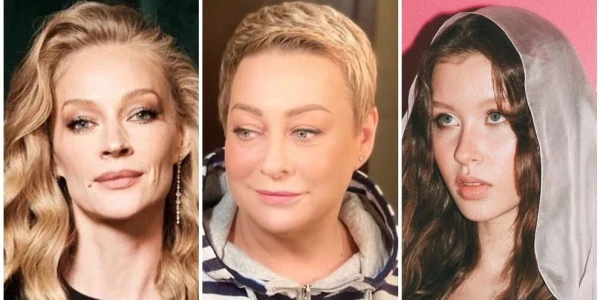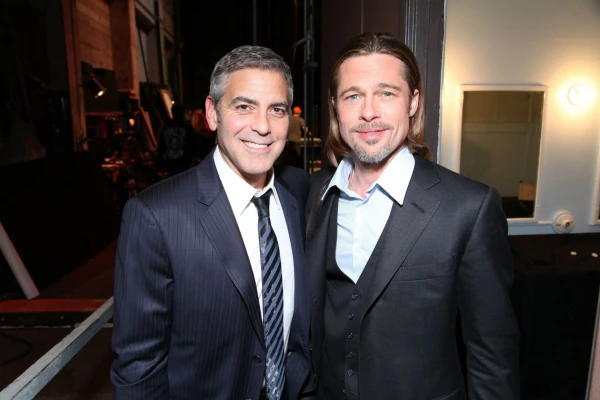
I didn’t use creams for a long time, until the mid-1990s.
A century ago, one of the greatest artists in the history of world ballet was born — Maya Plisetskaya (1925-2015). Here’s what she said about herself in an interview.
About Childhood and Theater
- In childhood, I was little interested in ballet, although my aunt Sulamif was a prima ballerina at the Bolshoi Theatre. I didn’t really like cinema either. My mother, a silent film actress, was always playing in some heart-wrenching tragedies: she was a leper, she was burned, trampled by horses — pure nightmares, I always cried when I watched her films. My mother would take my hand and say, “Look, I’m here, next to you.” And I would get angry, pull my hand away — so she wouldn’t interfere with my crying. I truly loved only drama — another aunt of mine, Elizabeth, was an actress with Zavadsky and often took me to the theater. After the performance, she would imitate all the characters. I particularly remember the play 'Love is No Joke'; there was a woman in a tight black dress, an extraordinary beauty. She stood behind a screen and listened to a conversation she shouldn’t have heard. At home, I, a five-year-old, copied her — her facial expressions, movements, walk, gestures. I did it for so long and so thoroughly that my father even got angry and slapped me. I was terribly offended and the next day at breakfast, I sat in silence. My father said, “Maya, are you offended? Well, forgive me, I love you.” And I replied so importantly: “Love is no joke.” This became a favorite saying in our family.
About Ballet and Ballerinas
- Yes, we had stars of cinema and theater in our family, but there was no money. Everyone dressed as they could, and we didn’t think about fashion at all. Then my mother was exiled, and when she returned — the war began. And there was no time for toilets at all. By the end of the war, I was already dancing in the Bolshoi troupe, and all the Leningraders had just arrived in Moscow — Ulanova, Lavrovsky (Leonid Lavrovsky, artistic director of the Bolshoi Theatre from 1944 to 1964 — “Ъ”) with his wife. Vaganova worked with us for two or three months. She dreamed of staying in Moscow, but her relationship with Lavrovsky was bad: Vaganova once said about his wife, Lya Chikvaidze, that her head was like a watermelon. She was very sharp-tongued, gave nicknames like in Gogol: “This is passed on to him in lineage and offspring.” I remember, in class, an actress with a short haircut was jumping, and Vaganova told her: “Ninel, darling, do you think it’s you jumping? It’s your hair that’s jumping.” Vaganova was brilliant: she would make a remark, and everything would fall into place. If I had worked with her, how I would have danced!
We were taught by Elizabeth Gerdt, but what could she teach? When I asked her how to make a movement, she would respond in a coy, childish voice: “I don’t know.” We stood with turned-out arms, hunched backs, crooked hips, and unturned legs...
It was only after fifteen years of work that I began to understand what was what, and I really started dancing correctly only about twenty years after school.
But Lavrovsky didn’t take Vaganova to the Bolshoi Theatre, and she went back to Leningrad. She wanted to prepare 'Swan Lake' with me — I had danced it once at the Kirov Theatre, as part of an exchange. Vaganova said: “We will turn the world upside down.” Not that she was thrilled with me, she just saw a material that was interesting to work with. But Lavrovsky threatened that if I rehearsed with Vaganova, I would never see the Bolshoi as long as I lived. And I got scared; I was still a girl. Although not such a girl, I was about twenty-two. But we were all afraid in Soviet times — that was the upbringing.
The truth is, even back then, if I didn’t like something, I couldn’t be persuaded or convinced that it was good. I didn’t pay attention to actresses in life, but I remember everyone on stage perfectly. Alla Tarasova, for example, always seemed insincere to me, and I couldn’t stand lies — neither in life, nor in drama, nor in ballet. When adult women on stage pretend to be girls, it’s just laughable. Let’s say, Lepeshinskaya — small, with stumpy fingers, what use is such a ballerina? And Golovkina? Heavy, with legs like stumps. I liked Semyonova. Not in life, of course; she wasn’t a very good person, complicated. But how she held herself, how she knew how to present herself! Her chest was like a bell, as Vaganova said, all puffed out — she had nothing to hide. She could be a queen, she could be a market woman — she feared nothing. Once, Lepeshinskaya (and her husband was a high-ranking official in the NKVD) said to her: “How undiplomatic you are, Marina Timofeevna!” So Semyonova — hands on her hips, legs apart, measured Lepeshinskaya with her gaze — and replied with such a stretch, with an indescribable disdain: “Who should I be diplomatic with, you?”
But Ulanova hid her shortcomings all her life. This was her credo both on stage and in life. She hunched over, folded her hands at her chest, twisted her shoulders to hide their width.
About Makeup and Socialism
We didn’t think about fashion after the war. Nor about makeup. Well, we only painted our lips and eyelashes. There was no mascara in stores, we took black greasepaint and grated soap into it — soap held the makeup on the eyelashes perfectly. And we didn’t use foundation or eyeshadow at all — it wasn’t accepted. People would think: has she gone mad, escaped from the circus? But on stage, of course, we did full makeup, glued eyelashes. And the makeup — from the VTO store (All-Russian Theatre Society), greasy, horrible, the foundation went on like plaster. After the performance, we removed the makeup like this: we smeared a thick layer of Vaseline on our faces and wiped it off with lignin — a rough paper, hard as sandpaper, it scratched. And everyone did this: both the prima ballerinas and the corps de ballet. Only Lyuba Bank (prima ballerina of the Bolshoi from 1920 to 1940) took care of herself: she bought lard at the market and removed her makeup with it — her skin was truly magical, white, smooth. And after washing, someone would smear their skin with sunflower oil, while most managed without it.
I, for example, didn’t use creams for a long time, until the mid-1990s, probably. Now I take care of my skin intensively, using Shiseido creams at night and during the day; they suit me very well. For a while here in Moscow, a beautician would come to me, do masks, massages. Then she died, and everything stopped. After that, we moved to Munich. There, I don’t do anything with myself and don’t go to any salons — I don’t speak German. And my makeup is the simplest. In the 1960s, when I was filmed by Avedon, they did my makeup: they made a stripe at my eyes. That’s how I still do my makeup.
About Fashion and Marlene Dietrich
I wanted to dress up in the late 1940s. I spent my entire salary on my mother and clothes. In Moscow, nothing was sold at that time, but there were resellers. A certain Clara, an elderly woman, came to me; she had connections with the wives of diplomats who, at the risk of getting caught, brought clothes here. Clara had a huge bag that could hold as much clothing as a large wardrobe. She dragged it from house to house. And how she wasn’t afraid — they arrested speculators! I had very beautiful dresses from Clara. There are no such now. Now there’s some strange fashion. It changes every year, but there’s nothing I would want to wear — some little tummies, drapes, bodies that are not visible in them or, on the contrary, too much is visible. Back then, dresses were tailored to the figure — like a glass: the chest, waist, hips were fitted, the knee covered. The ideal was Marlene Dietrich; she caused absolute delight. Greta Garbo was also considered beautiful, but I found her unnatural — too pompous. In the 1950s, dresses with wide skirts appeared — very beautiful. Then came the 1960s, when, according to Voznesensky, “mini to the very bangs.” I certainly didn’t wear such length, although I did wear short dresses.
About Tours and Boutiques
When theaters began to go on tour, we started to dress abroad. But even there, good things were expensive, and they paid us peanuts.
I earned 40 dollars for 'Swan Lake', and that was considered decent. Because the corps de ballet earned five, and the Sukishvili-Ramishvili ensemble earned only three. And a steak then cost one dollar.
At Igor Moiseyev’s, the girls fainted from hunger. One of our artists said at lunch: “I feel like I’ve eaten my son’s shoe.” In general, we bought what we could afford.
Of all the famous brands, we first fell in love with Christian Dior. Even then, we understood that what he was doing was not just fashion; it was art. But not only Dior had beautiful dresses at that time; amazing things were made in Italy. And how beautifully everything was sewn! In Paris, in the early 1960s, I was at a fitting in Yves Saint Laurent’s workshop, and he had Russians working for him. Varvara Karinskaya, who made costumes for Balanchine’s ballets, and her mother, a pre-revolutionary seamstress — she fled from Russia after 1917. There are no such seamstresses anywhere now. However, the French still sew well — they have the best men’s jackets in the world.
It’s a pity, of course, that Christian Dior didn’t live long. But his business didn’t fall apart. His students — Cardin, Yves Saint Laurent — simply adored him. Cardin became my favorite and constant couturier. For life.













Leave a comment